Pet owners interested in tarantulas need to know which species are more docile. Just like other animals, tarantulas have their personalities making them suitable or not suitable as a pet.
All tarantulas can become aggressive if threatened. However, the following species are known for generally calm behavior and very rare aggressive outbursts.
Table of Contents
20. Socotra Island Blue Baboon
Scientific name: Monocentropus balfouri.
Common name: Socotra baboon tarantula, Socotra blue baboon tarantula.
This tarantula grows to a size of 2.5 inches. These hairy tarantulas are known as burrowers.
When kept as a pet they almost always prefer to dig deep in the substrate. Setting up the right substrate is crucial as they spend the most time in it or at the entrance of the burrow.
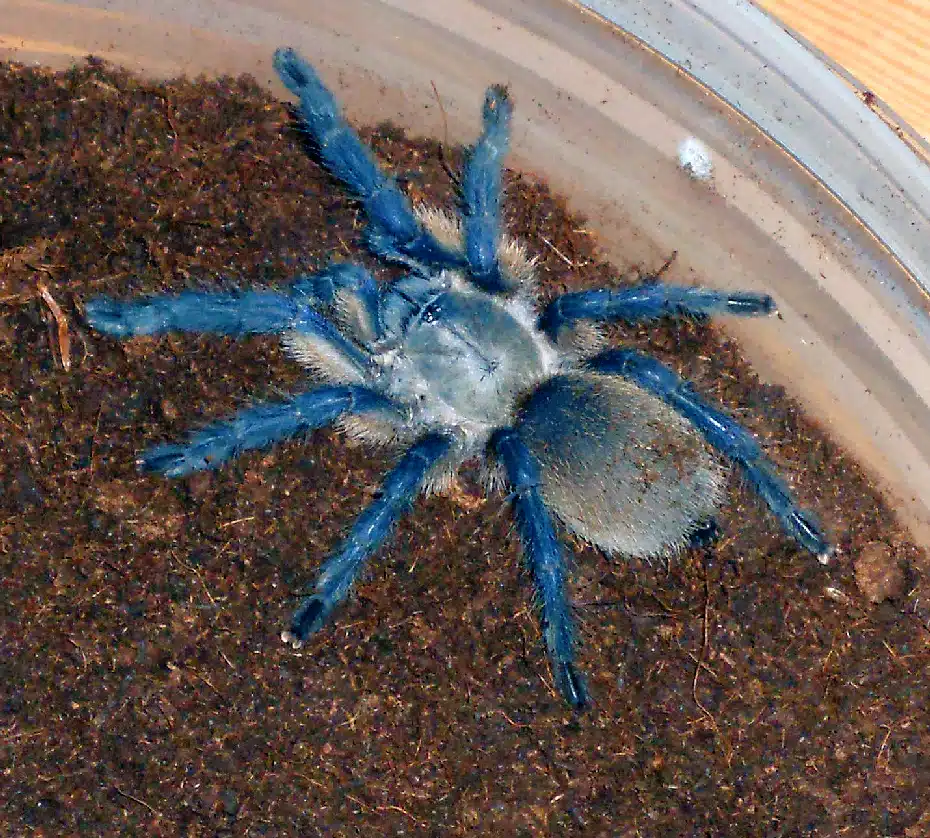
These are considered docile tarantulas and sometimes recommended for beginners. High moving speed might be one of the few reasons these tarantulas would not be recommended to a beginner tarantula owner.
19. Martinique red tree spider
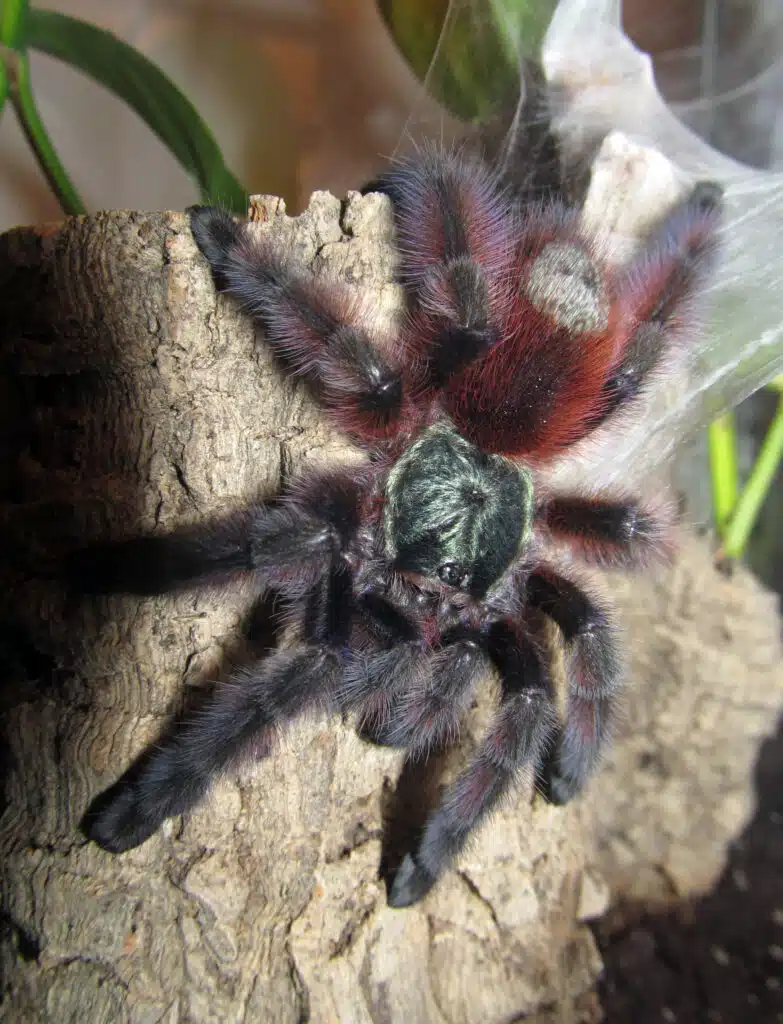
Scientific name: Caribena versicolor.
Common name: Antilles pinktoe tarantula, Martinique red tree spider, Martinique pinktoe.
This vividly-colored tarantula is a Martinique island native. Coming from the Caribbean Sea, the tarantula is mostly known for its original coloring and docile behavior.
Friendly with people, the tarantula is the first blue. As it grows its colors start to change. It eventually settles as a red tarantula with a green carapace in adulthood.
These tarantulas are known as tree-dwelling. Complex funnel-type webs are built by the species. A lot of effort is put into making these webs which means tarantulas prefer to sit on the most of the time.
Both male and female Martinizue red tree spiders are known for spending a lot of time on or around the web. Males are identified by their smaller abdomen.
18. Pink Zebra Beauty
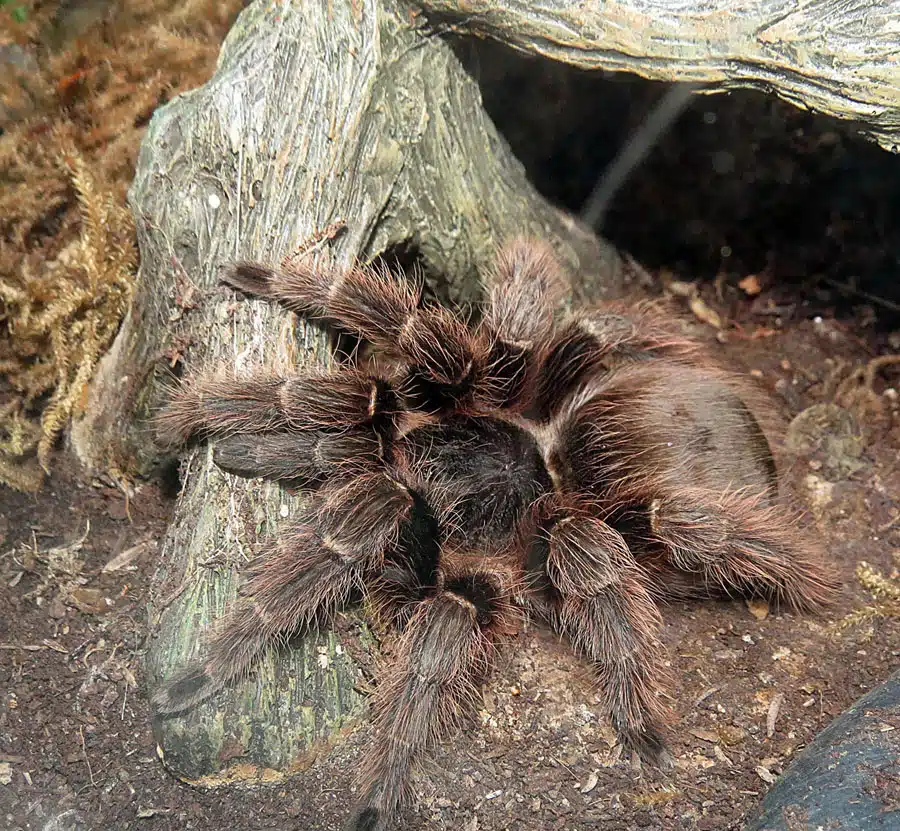
Scientific name: Eupalaestrus campestratus.
Common name: pink zebra beauty.
This spider is known to originate from South America. It’s a Brazil and Paraguay Native.
Its species is recognized by its brown body with yellow markings. Small yellow stripes are visible on the patellae.
When its legs are extended the tarantula can measure up to 6 inches.
Hobbyists are among the people most interested in the species since it has a very docile temperament. Its tolerant nature recommends it for almost any type of pet fan.
17. Golden Blue Leg Baboon
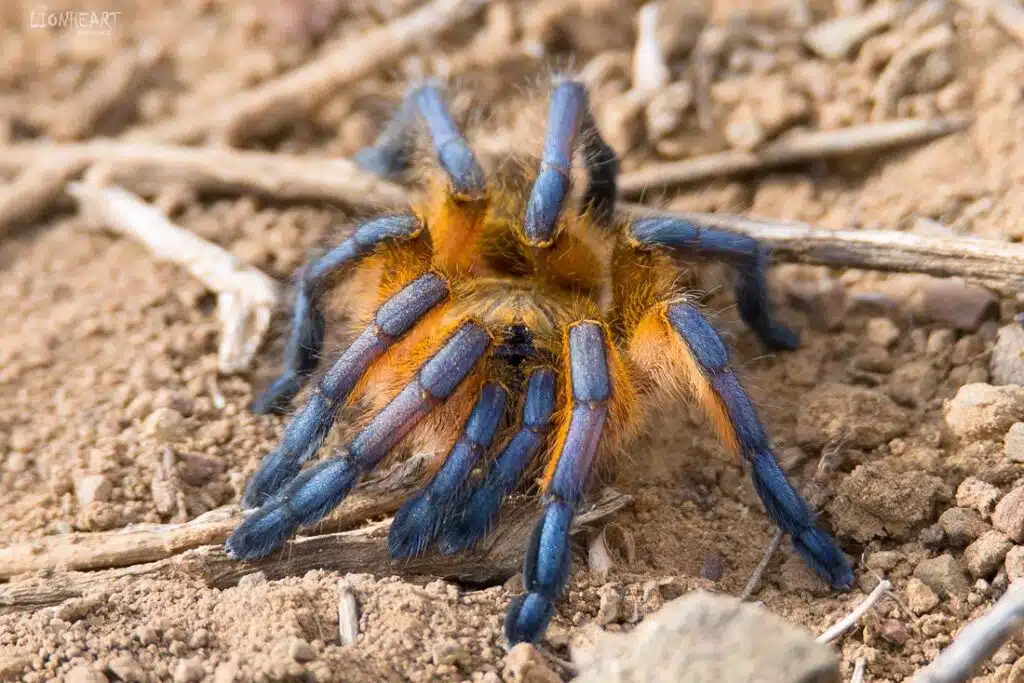
Scientific name: Harpactira pulchripes.
Common name: golden blue-legged baboon spider.
This species comes from South Africa. It doesn’t have urticating hairs which means it can be a docile solution as a pet. The tarantula does have potent venom, but it uses it rarely.
The species spins webs and also burrows in the ground. A substrate of around 4 inches is sufficient for adults to burrow.
Most tarantula owners are interested in this species for how it looks. It has a brown-golden body color and unique blue legs which means the bi-color tarantula stands out easily.
Feeding is only necessary twice per week. Crickets are among its favorite foods.
16. Brazilian salmon pink bird-eating
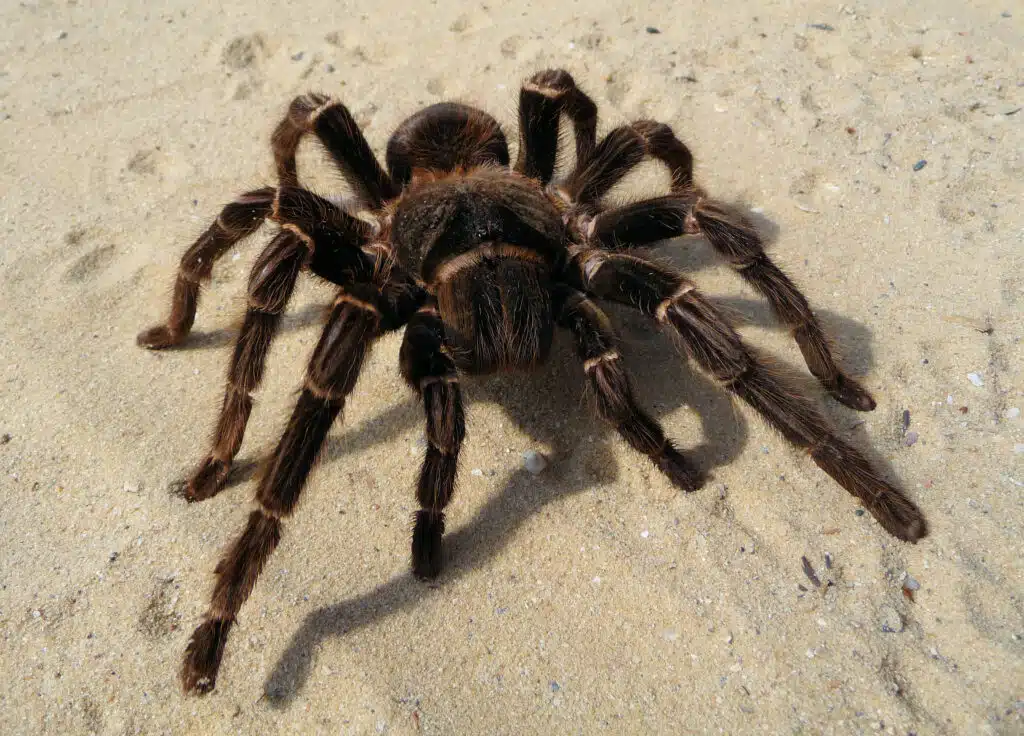
Scientific name: Lasiodora parahybana.
Common name: Brazilian salmon pink bird-eating tarantula.
These species are among the world’s largest. They have been studied since 1917. Brazil is the native country of the species.
A docile temperament describes these tarantulas the best despite being the fourth largest in the world. As they aren’t as expensive as other large tarantulas they have many fans in the hobbyist community.
These species mostly live above ground which means they are easy to admire. Handling isn’t recommended to new tarantula owners.
The Brazolian salmon pink bird-eating tarantula has sharp hairs on the abdomen. These hairs can be launched in the air using movements of the rear legs.
The hairs are irritating to the skin. They are known to cause blindness when they get in the eyes.
15. Western Desert Tarantula
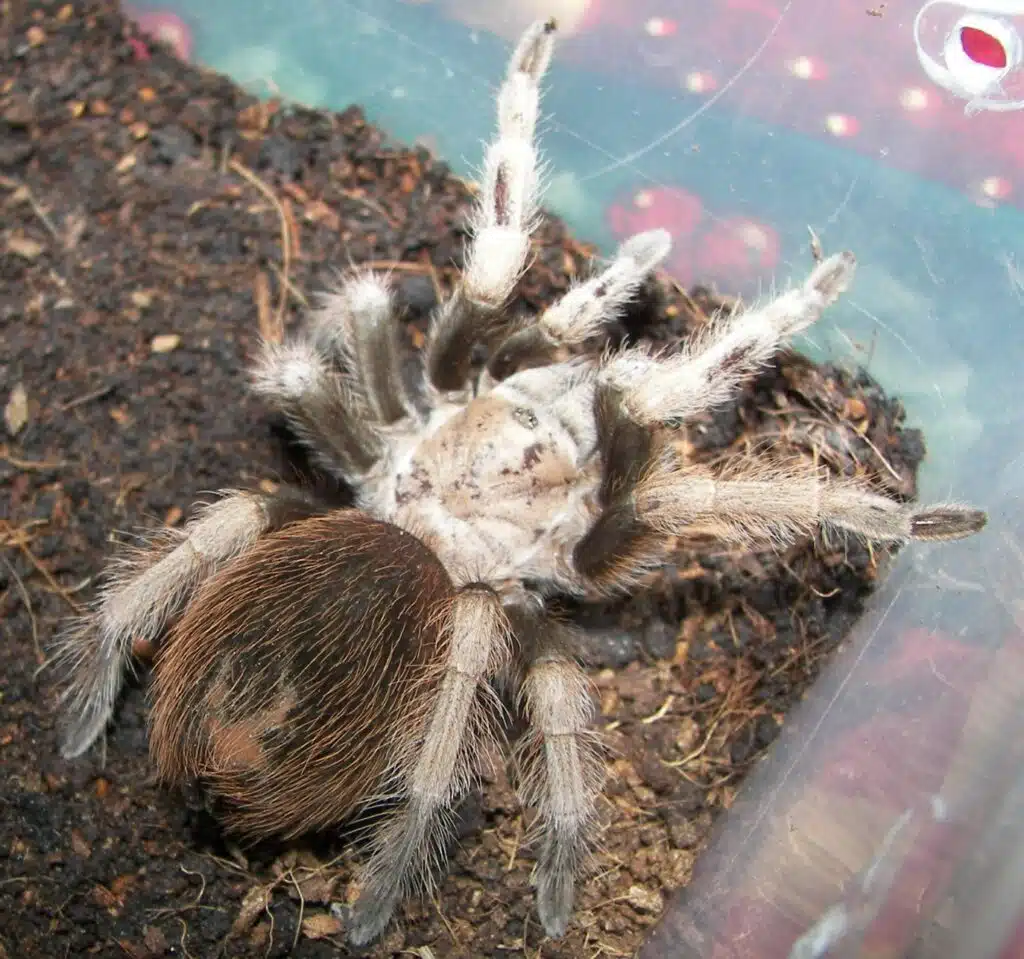
Scientific name: Aphonopelma chalcodes.
Common name: western desert tarantula, Arizona blond tarantula, Mexican blond tarantula.
This tarantula is also known as the Mexican Blond due to its bright coloring. It has bright coloring as its natural habitats are deserts and arid places.
It’s native to Arizona and parts of Mexico. Tarantula pet owners like it a lot given it has a docile nature and because it lives a long life.
Males live anywhere between 5 and 10 years but females live up to 30 years.
Its docile nature can suffer swift changes through the molting phase. Molting allows spiders to grow and the Western Desert Tarantula is known for molting multiple times per year.
14. Mysore Ornamental
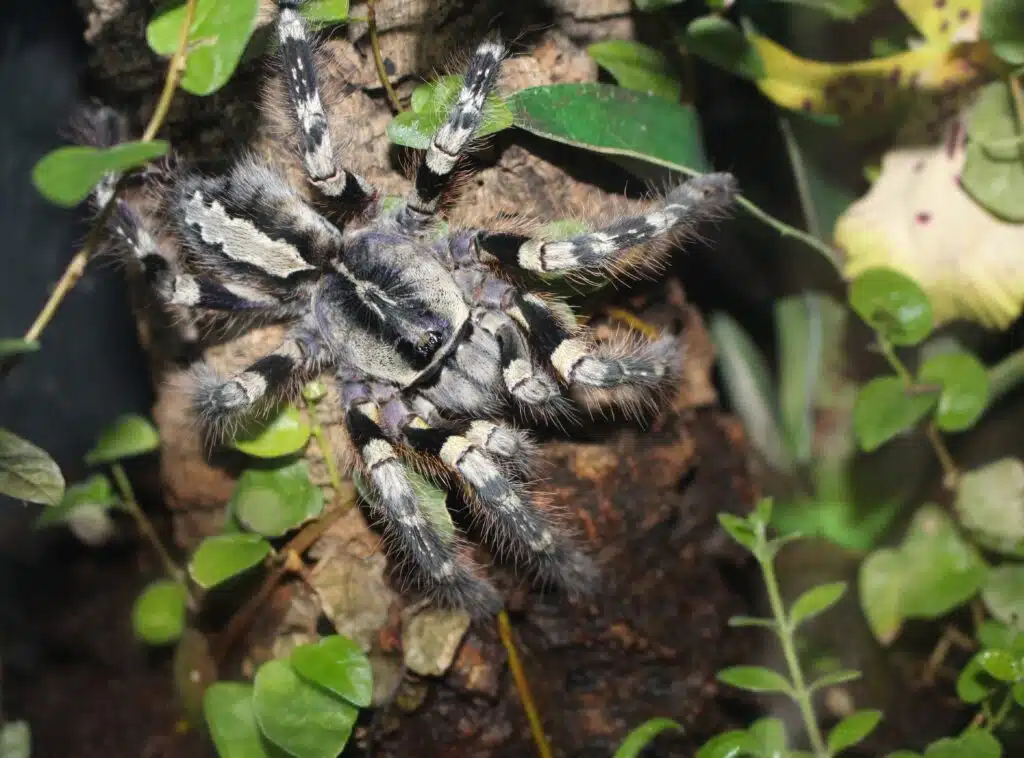
Scientific name: Poecilotheria striata.
Common name: Mysore ornamental tarantula.
These tarantulas are known for their long lifespan. Males live up to 5 years while females can live up to 15 years.
Originating from South Africa, they are fast and they are seen as great pet tarantulas.
They need a tall enclosure that’s at least a few times their height given they like to move fast.
While venomous, these tarantulas are generally not aggressive when handled with care.
13. Texas Brown Tarantula
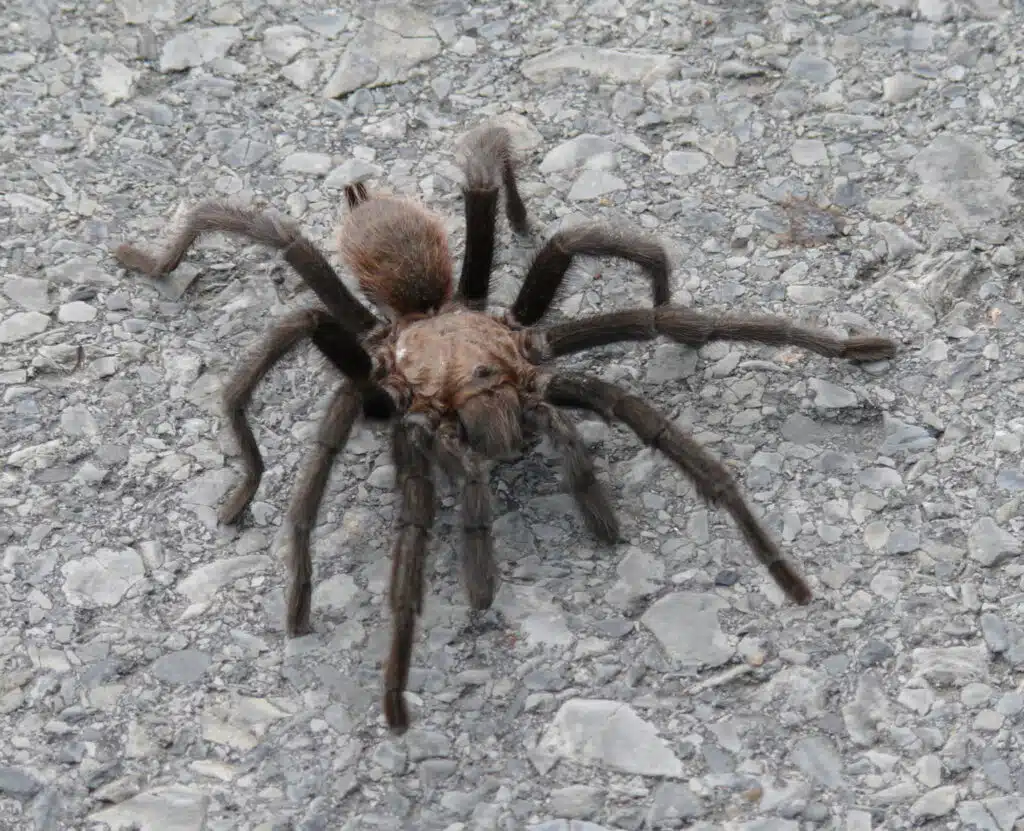
Scientific name: Aphonopelma hentzi.
Common name: Texas brown tarantula, Oklahoma brown tarantula, Missouri tarantula.
These tarantulas are native to Texas and Mexico. They are generally docile and recommended for beginners.
However, even Texas Brown Tarantulas bite when threatened. They tend to lean on their back legs to appear taller.
These are web-weaving tarantulas. While nesting in the ground, they weave a thick web for defense. Caught-up prey is quickly detected by this web.
12. Guatemalan Tiger Rump
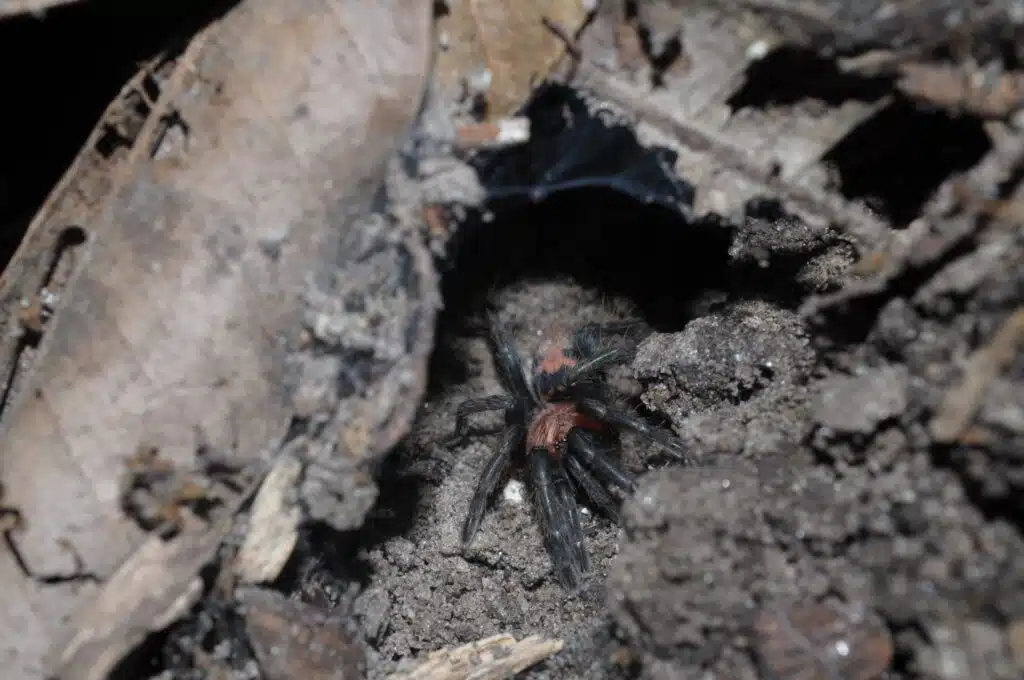
Scientific name: Davus pentaloris.
Common name: Guatemalan Tiger Rump Tarantula.
These tarantulas are ideal as pets as they’re always sitting out as a display. They are generally docile and they can be considered by beginners given they aren’t venomous.
While they don’t have venom, Guatemalan Tiger Rumps have urticating hairs. They can shoot these hairs in the air if they feel threatened.
These tarantulas aren’t known for the longest lifespan. Males live between 2 and 4 years. Female tarantulas can live up to 11 years.
Feeding the tarantulas is easy. They only eat twice per week when in captivity preferring prey such as crickets.
Young Gatemalan Tiger Rump tarantulas eat 2 crickets twice per week while adult tarantulas eat up to 4 crickets 2 times per week.
11. Greenbottle blue tarantula
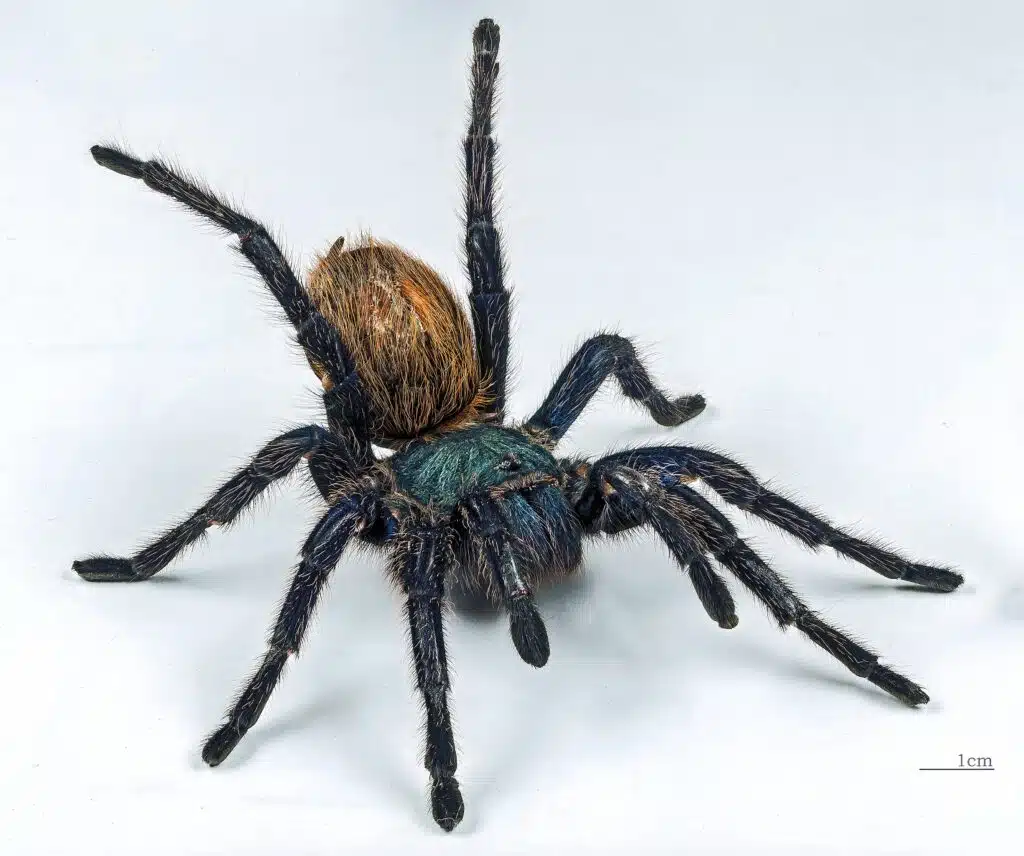
Scientific name: Chromatopelma cyaneopubescens.
Common name: Greenbottle blue tarantula.
These species of tarantulas come from the Paraguana Peninsula. The tarantulas are popular among hobbyists based on their attractive colorful looks.
Feeding is simple when kept as pets as these tarantulas have a varied diet. They eat crickets, roaches, and worms.
Natural habitats involve living in webbed burrows. These webbed burrows around are found under bushes, tree roots, and rocks. The webbing is similar to a funnel.
The temperament of the Chromatopelma cyaneopubescens is generally docile. These tarantulas are known to avoid confrontation at first.
Fleeing is the first line of defense of the species. However, they can use urticating hairs and they have been seen as skittish compared to other pet tarantulas.
10. Common pinktoe
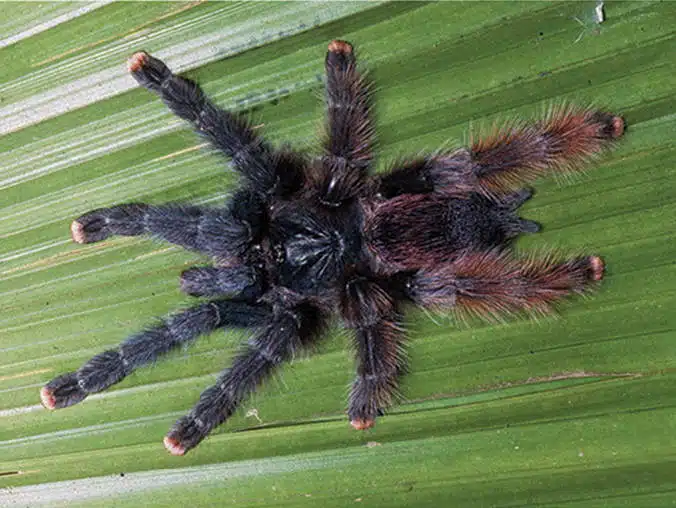
Scientific name: Avicularia avicularia.
Common name: pinktoe tarantula, Guyana pinktoe, common pinktoe, South American pinktoe.
The species is identified by a dark-color body and pink legs. Native to South and Central America, it’s a docile species often raised in captivity.
The Common pinktoe is an arboreal tarantula. It likes to climb which means it needs good climbing space in captivity.
Good thick substrate, climbing options, and high humidity are required for the species to be raised in captivity.
Beginners can consider it as the docile tarantula tends to move away when provoked. It sometimes leaps away when it senses a threat.
9. Mexican Redknee
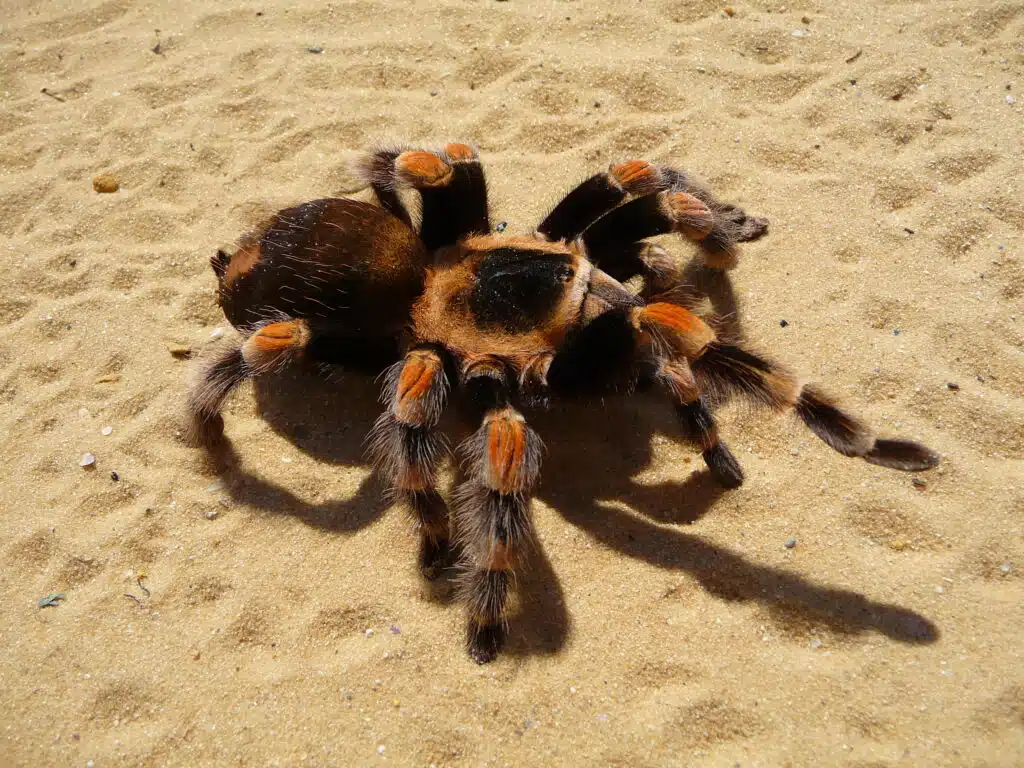
Scientific name: Brachypelma smithi.
Common name: Mexican redknee tarantula.
The species is a Central America native. Its commonality in the hobbyist’s world is given by its colorful body and legs.
Mexican Redknee tarantulas get their name from the pink patellae. They are also known for having multiple colors. Females are found in more colors than males.
The species is recommended for smaller enclosures since they are smaller than other pet tarantulas. They only measure more than 2 inches as females and up to 1.9 inches in males.
However, males typically have longer legs with the 4th set of legs being the longest.
The species is known for living underground. Burrows of the species are known to have wide tunnels, up to 3 times wider than their leg span. Burrows have wide chambers for each tarantula which also serve as molting places.
8. Brazilian black
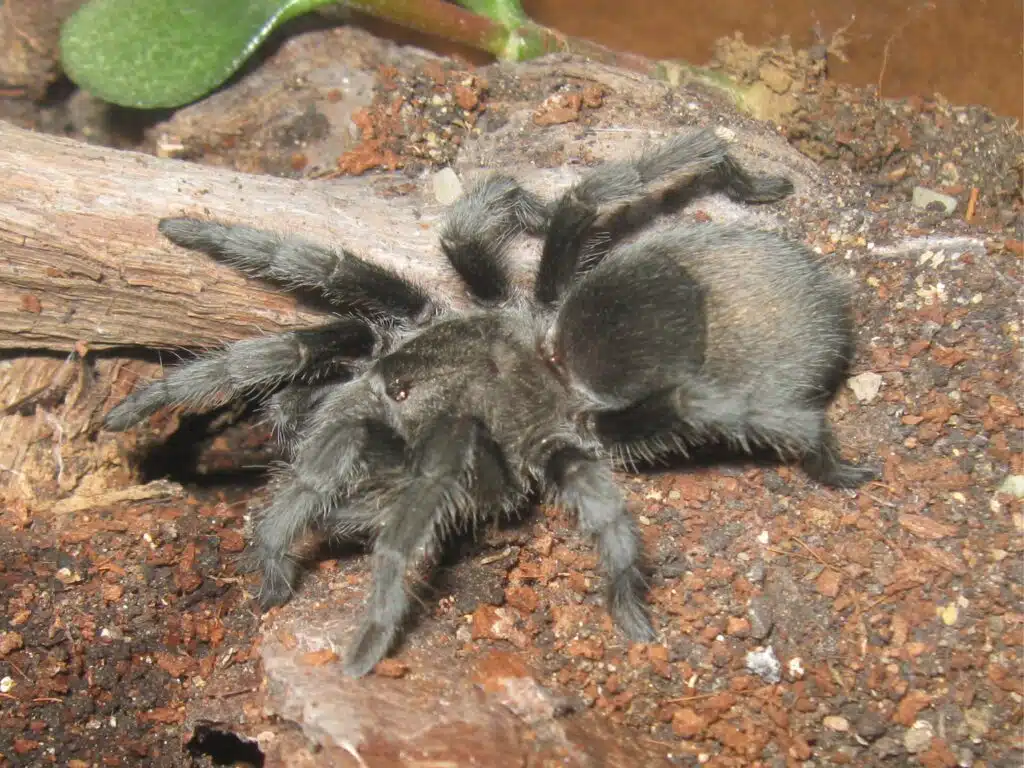
Scientific name: Grammostola pulchra.
Common name: Brazilian black tarantula.
The Brazilian black gets its name from its all-black body. These tarantulas are known for having a very calm temperament, ideal, for just about any breeder.
Unlike other tarantulas, the species is known for spending most of the time in burrows when kept on a thick substrate.
It has venom, the capacity to sting, and it possesses urticating hairs. It rarely resorts to these defense mechanisms.
The species has a long life but it also takes a long to mature. It can take up to 8 years for the Brazilian black to reach maturity.
7. Mexican Red Rump
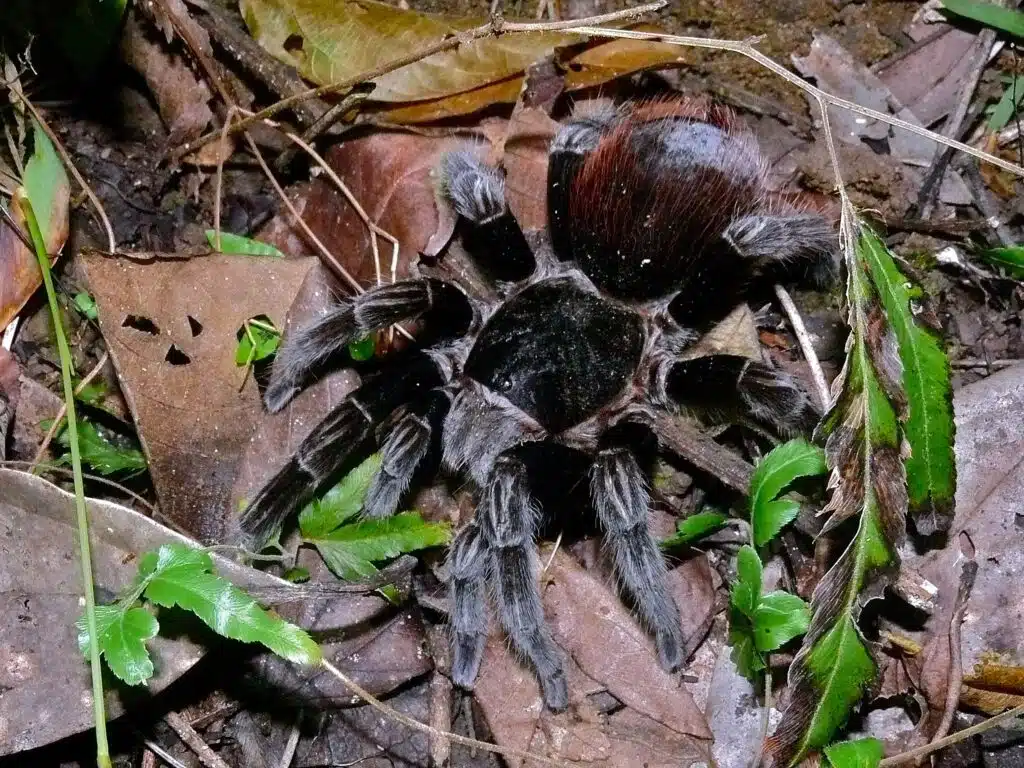
Scientific name: Tliltocatl vagans.
Common name: Mexican red rump.
This is a vulnerable species on the brink of extinction in the wild. It’s highly popular as a pet, however.
Part of its popularity is given by its long life span. The female tarantula lives up to 15 years.
With a docile nature, these tarantulas are mostly popular among hobbyists. They can release urticating hairs, as most tarantulas.
Feeding is seen as easy for the species. They eat anything they can overpower such as insects, bugs, and lizards.
6. Red-legged Tarantula
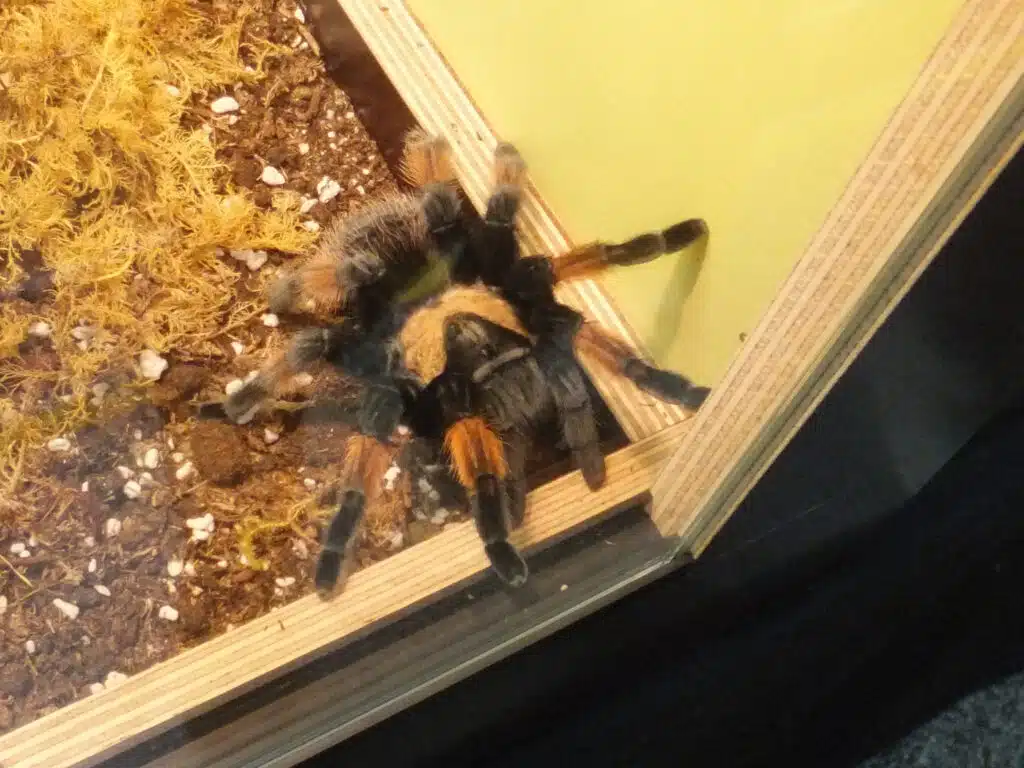
Scientific name: Brachypelma emilia.
Common name: Mexican redleg, red-legged tarantula.
The Red-legged tarantula is more docile than the Redkness tarantula. This is also a Mexican native with high popularity among hobbyists.
The Red-legged tarantula is known for living for decades which makes it an attractive option for hobbyists.
Known for its red legs and black body, this species costs more than others while also being under threat from illegal smuggling.
5. Rose Hair Tarantula
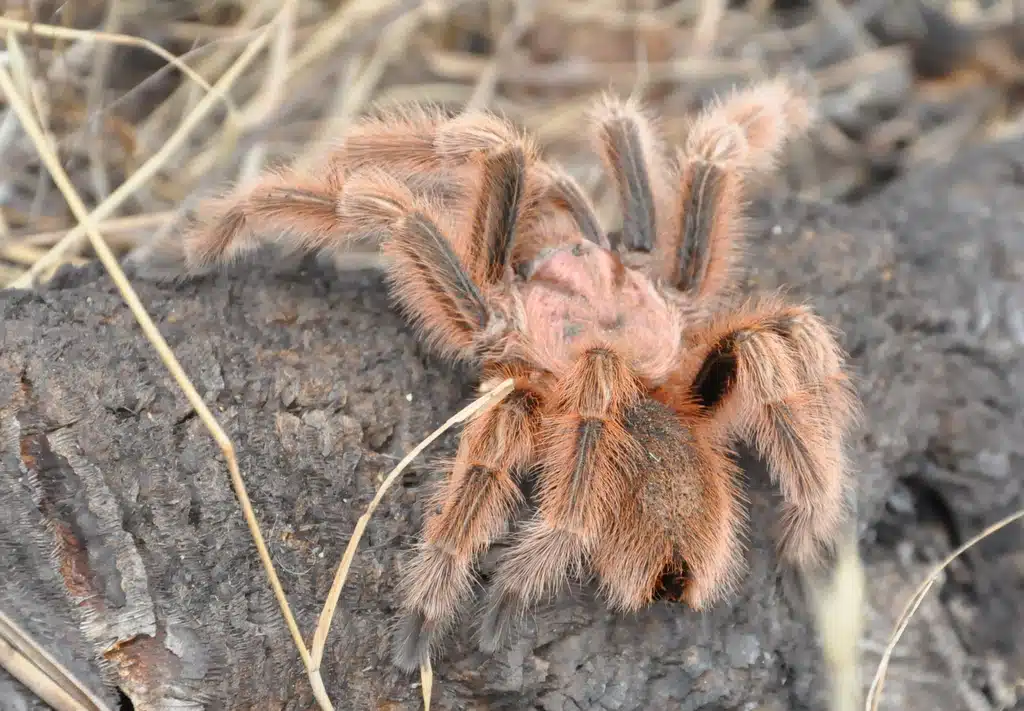
Scientific name: Grammostola rosea.
Common name: Chilean rose tarantula, rose hair tarantula, Chilean fire tarantula, Chilean red-haired tarantula.
Rose Hair Tarantulas are native to the deserts of Chile and Bolivia. It’s considered cheap and docile.
The species is known for living as much as 20 years, making it popular among hobbyists.
Its friendly docile nature is seen as ideal for beginners. These tarantulas run away when the tank is cleaned most of the time.
However, there have been instances when it threw its hairs up in the air in the eyes of the owners.
The species lives in burrows but it doesn’t prefer them when in captivity. Active during the night, it has a varied diet eating everything from spiders to moths.
While generally docile, it’s best to wear protective glasses when cleaning the tank of the Rose Hair tarantula.
4. Chaco Golden Knee
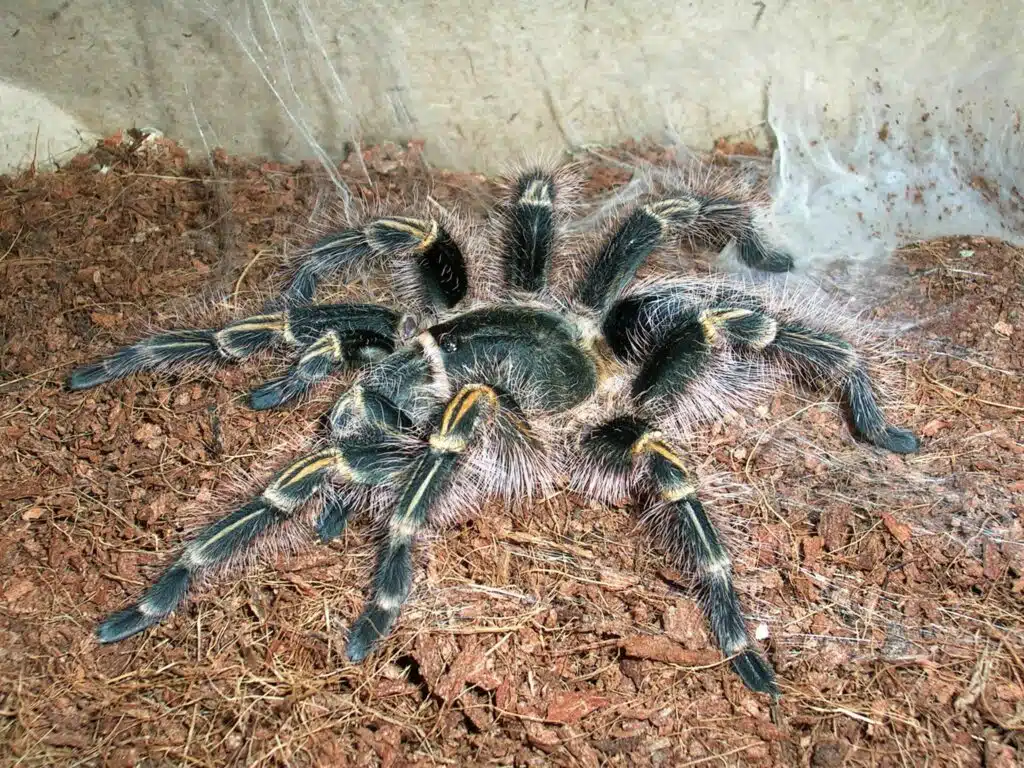
Scientific name: Grammostola pulchripes.
Common name: Chaco golden knee.
This is a large tarantula species reaching a size of up to 8 inches. It has a docile temperament recommended for beginners interested in tarantulas.
It spends much of the time on display during the day. Its calm behavior only changes when molting. The female is known to molt at short intervals of just a few weeks.
The female is also known for living more than a few decades, unlike the male that mostly lives up to 5 years.
3. Mexican Redknee Tarantula
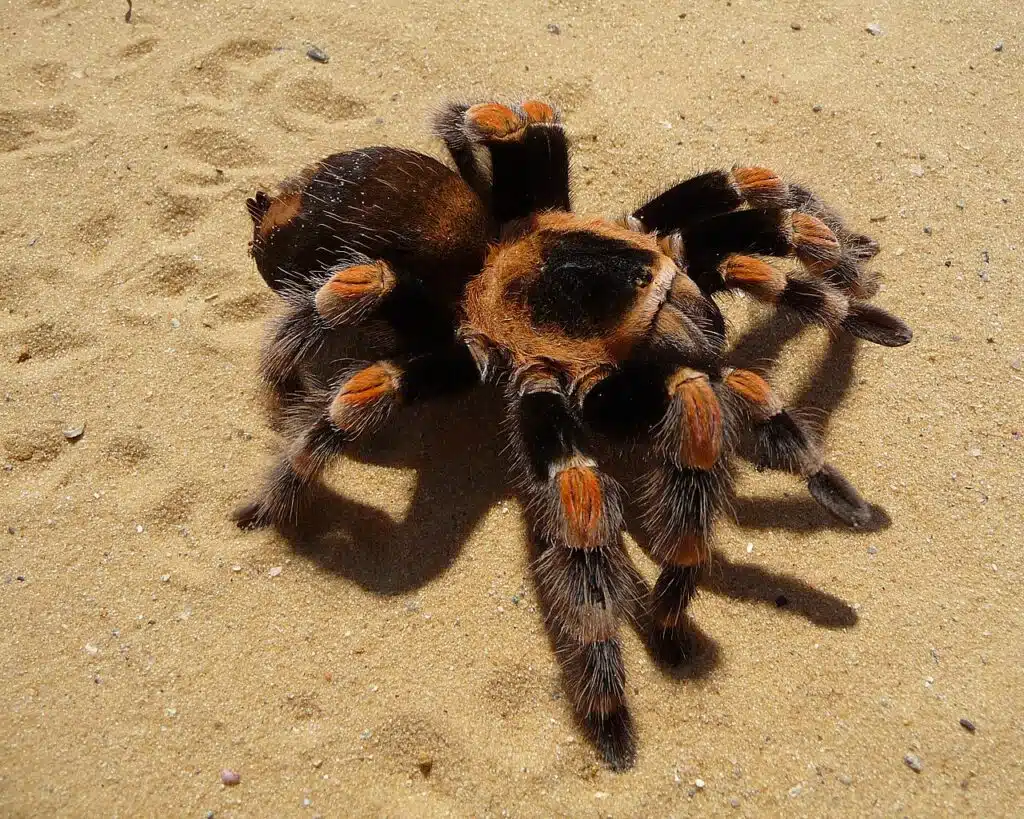
Scientific name: Brachypelma hamorii.
Common name: Mexican Redknee Tarantula.
This species has often been confused with Brachypelma smithi. However, it’s native to the Western Sierra Madre of Mexico.
The tarantula is mostly black with red-brown markings. It’s one of the most popular tarantulas among hobbyists as it lives more than 30 years.
Docile and mild in temperament, the tarantula can still bite and throw urticating hairs. Its strong fangs can even penetrate the skin leading to painful bites when it feels threatened.
It’s also likely to become aggressive when it molts. This is a process that can take up to several hours at which time the tarantula doesn’t move.
2. Curlyhair Tarantula
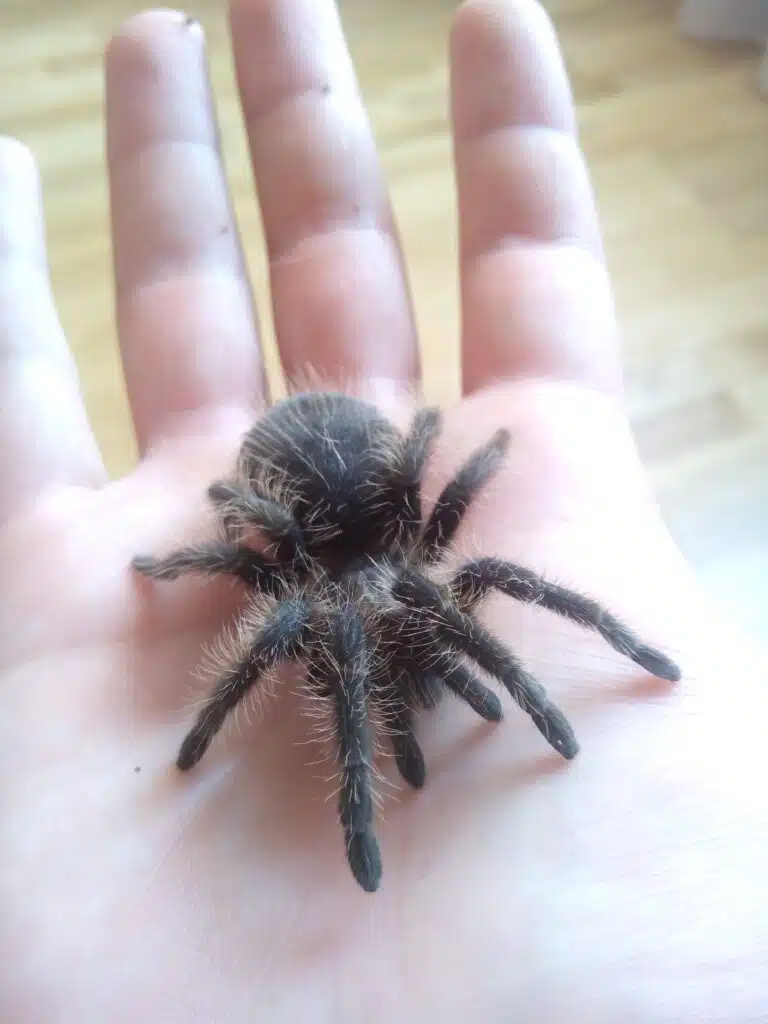
Scientific name: Tliltocatl albopilosus.
Common name: Curlyhair tarantula.
The Curlyhair Tarantula is native to Nicaragua and Costa Rica. This species is known for living a long life. The females live up to 20 years while males live up to 5 years.
Generally docile, it’s highly common as a pet spider due to its bright gray hairs. Males have golden nuances compared to females.
The species is docile and highly popular in captivity. It may become aggressive during molts (it first molts a few weeks after emerging). The female can also become aggressive towards the Curlyhair Tarantula when mating is refused.
1. Chilean tarantula
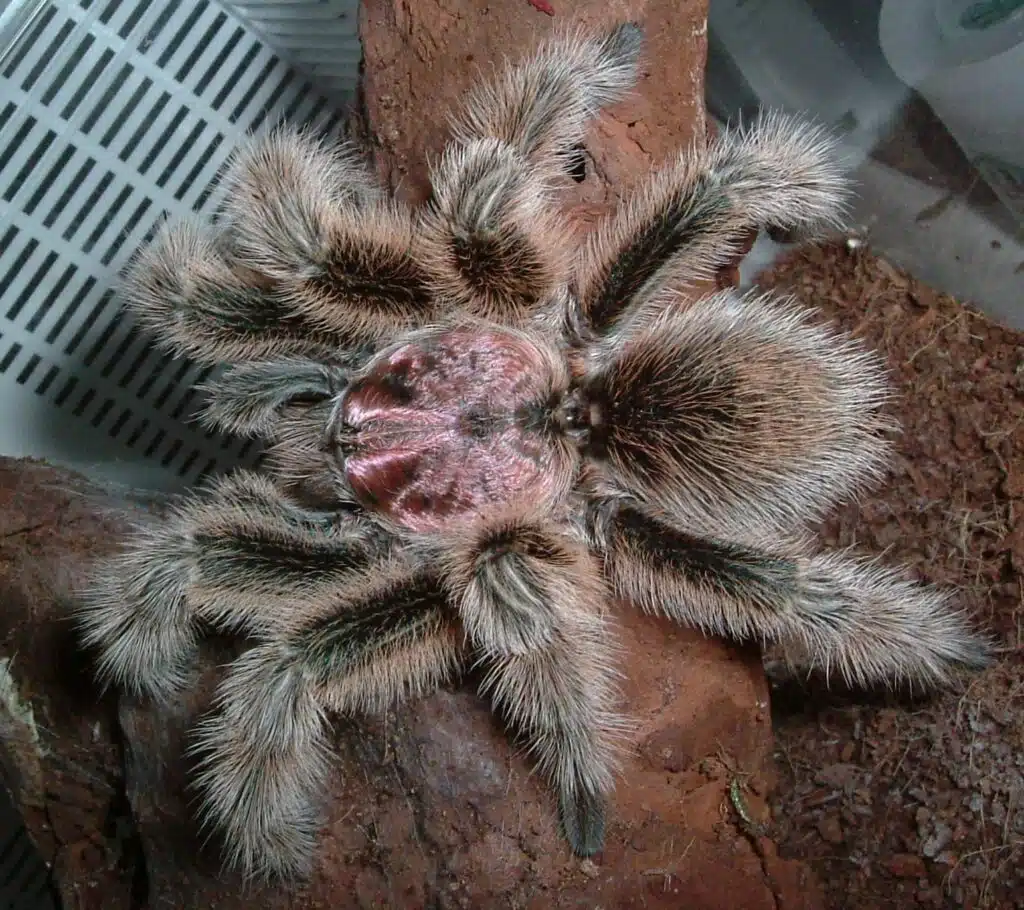
Scientific name: Grammostola porteri.
Common name: Rose hair tarantula, Chilean tarantula.
This tarantula is very common due to its docile nature. It also gains popularity due to its gray and pink or gray and red hairs which make it look unique.
The species is native to the deserts of Chile which means it always prefers dry climates.
It prefers a dry enclosure in captivity. A dry substrate is needed to keep this tarantula healthy. The wet substrate or high humidity enclosure prompts the tarantula to climb its walls to find a dry environment. The species is found in a couple of variations of Grammostola rosea and Grammostola porter. Both variations are considered very docile.
Further Reading: